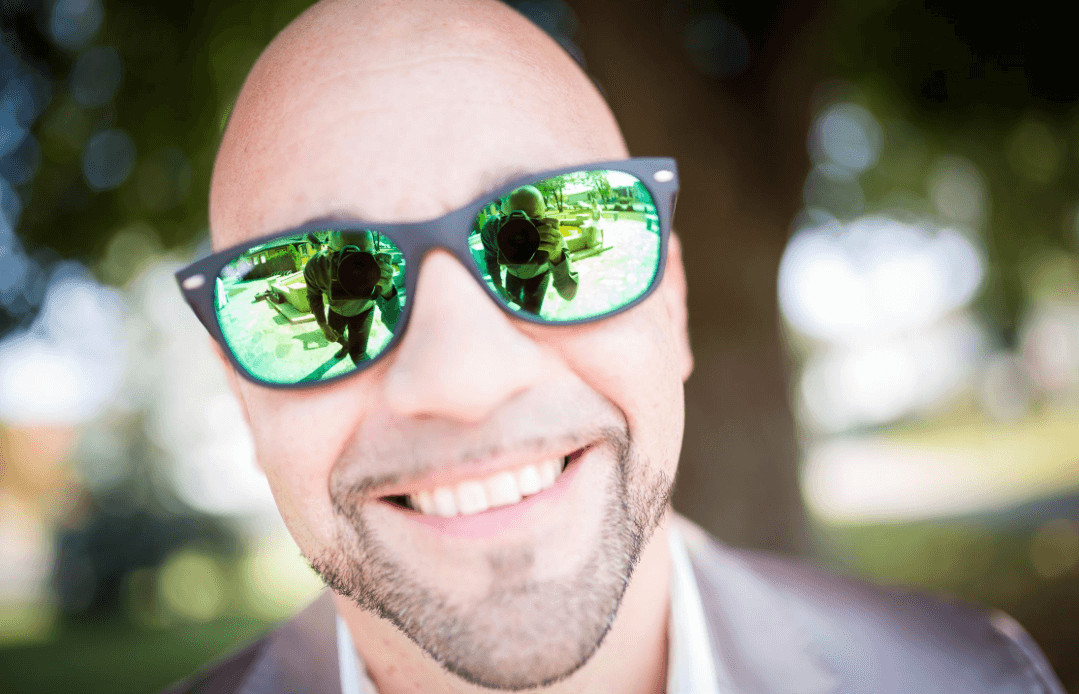What Is Alopecia? Alopecia Causes And Treatment Explained

Back in the late 1960s, people were singing and dancing to the mesmerizing soundtrack of the hit Broadway musical Hair. This music glorified the loose, strandy, protein-y appendage which evolution has kindly left on the tops of our heads – our hair. We, humans, have hair, and there are those who put a lot of stock into it. Yet some lose it to a condition called alopecia, and in this post, we’ll explain alopecia a little more in-depth.
We have learned to use our hair in different ways. Ways which perhaps transcend the original intent (and evolutionary purpose) of mere head protection and control of temperature. Nowadays, we use our hair as a means of self-expression, as a way to attract potential mates, as a charitable donation to others, and even in the process of manufacturing clothing. Just a few examples.
What Is Alopecia?

Alopecia can affect both men and women.
Plainly put, alopecia means ‘hair loss’ or baldness. Modern medicine recognizes many different types of alopecia (or similar conditions) in humans. These can be temporary or permanent conditions. And usually, they’re further broken up into scarring and non-scarring varieties or occurrences. It’s a condition which has no single definite cause, nor a cure or guaranteed treatment.
Male pattern baldness is the most common form of alopecia, with female pattern baldness being a close second. A third widely occurring form is known as alopecia areata. This is baldness resulting from a type of autoimmune disease or disorder (and according to some, it could also be due to psychological stress). In the case of alopecia areata, the body turns on the hair follicles and attacks them, causing the formation of different bald spots on the scalp.
But alopecia is not just a one-location condition. Sometimes it spreads to other areas, sometimes it doesn’t. There are times when the only visible symptom is the thinning of the patient’s hair, while in other cases it could bring on full-blown baldness which occurs relatively quickly. It could potentially affect body hair as much as it does the scalp’s hair. Let’s check out some of the most common types of alopecia.
Different Forms of Alopecia
Androgenic Alopecia

Male pattern baldness includes thinning of the hair.
This is also known as male and female pattern baldness. The patterns themselves vary. With men, androgenic alopecia is categorized as thinning (followed by visible baldness) of the sides and crown of the head. In women, it may lead to actual baldness. But in many cases, it will remain a light-to-severe thinning of the female’s hair, primarily in the area of the crown but not limited to it.
Alopecia Areata
The term alopecia areata refers to a condition where the body’s immune system attacks its hair follicles. This state could happen as a standalone condition or be related to an ongoing autoimmune disease such as lupus, thyroid conditions, and allergies. Here, too, it’s thought that a strong genetic factor is involved. Stats have shown that alopecia areata could be hereditary.
Alopecia Totalis
Alopecia totalis involves complete hair loss of the scalp and face, with the rest of the body’s hair remaining intact and (presumably) unaffected. This often happens in one rapid progression, but it could also drag itself out over a longer period of time. Like the other types of alopecia, it has no cure and no definite treatment. Sometimes alopecia totalis can be treated, but even so, success rates are not high and results are seldom more than partial regrowth. More on possible solutions later in the article!
Alopecia Universalis
As the name suggests, this is universal (all around) hair loss of body hair and head hair. Alopecia Universalis is alopecia at its most advanced, where it doesn’t merely go for the head’s hair, but targets any and all hairs on the body.
This could develop into a major medical concern because some hairs are more important than others. Having (or not having) a cool new hairdo is important. But consider not just the scalp’s loss of hair, but also the nasal cavities, the eyes, and the ears. These organs are also affected by alopecia Universalis, and those who suffer from this condition must take special precautions to avoid further complications via infection or damage to sensitive areas.
There are cases where it can become dangerous when you don’t have the body’s natural protection we call ‘hair’. After all, hair is there for a reason.
Traction Alopecia

Additional stress on the hair and scalp, such as from dreadlocks, can lead to hair loss.
Traction alopecia is a form of hair loss which seems to say “I told ya so!”. It’s brought on by a human intervening with the natural process of hair growth, in the form of adding stress on the scalp and its hair follicles.
When a person decides to fashion their hair into tight braids, for instance, or if they create their own dreadlocks by twisting and pulling and ripping the hair, or if they opt for a cosmetic surgical procedure which pulls on their scalp and hair – these all put unnecessary tension on the hairs, and it could bring about traction alopecia.
Chignon Alopecia
Chignon alopecia is very similar traction alopecia. But it affects the crown of the head, and it’s mainly the result of wearing tight buns or a taut ponytail for prolonged periods of time. Prima ballerinas may look great when they dance, but their scalp could tell a very different story. Chignon is French for ‘nape of the neck’, and in modern-day English, the term refers simply to a hair bun or hair style where the hair is pulled back or knotted to the back. Because of this, chignon alopecia is certainly one of the more avoidable types of alopecia.
What Causes Alopecia?

A healthy lifestyle is just one factor when it comes to potential causes of alopecia.
As mentioned, there are many different forms of alopecia and baldness-related conditions in humans. Because male and female pattern hair loss are the most common forms of the condition, I will be starting with them first.
So what causes alopecia? It’s been known for a long time that there is a very dominant genetic factor involved in the onset of male and female pattern baldness. Hormones play a part, as do age, stress, and lifestyle. But you cannot ignore the underlying genetic component, which seems to trump them all sooner or later. You could be doing all the right things: eating right, exercising, and meditating, and you’ll still end up bald at 32.
The two more avoidable forms of alopecia (traction and chignon) are caused by forcing the hair and scalp to experience some kind of tension. Whether for the sake of cosmetics, art, fashion, or other reasons – those two forms of alopecia are caused by the individual being too aggressive with their hair, for long periods of time.
As previously stated, a preexisting autoimmune disease could also be the cause for various cases of alopecia to manifest, especially alopecia areata, totalis, and Universalis. Don’t assume anything. Get yourself checked out by a physician (ideally a dermatologist) if you have reason to believe you are being affected by alopecia or a similar condition.
Some forms of alopecia are unavoidable and some are more avoidable, but at any rate, it doesn’t happen overnight. There are usually some symptoms which may accompany it, depending on the condition.
Early Warning Signs of Alopecia

If your hair isn’t as full as it used to be, you might want to check if there’s a problem.
Humans shed and grow hair naturally. But in some cases, things are not in order. The following points are general early warning signs of alopecia, but they don’t cover all possibilities. And keep in mind that they don’t necessarily indicate alopecia.
- Hair thinning/shedding – this is the most popular symptom, and it often happens gradually. Notice more than the usual amount of hairs around your shower drain? If the increase in shedding doesn’t stop, go see someone.
- Painful and/or itchy skin and scalp – sometime before the hair thins or falls out, there could be noticeable itchiness or pain. Addressing this can contribute to early – and possibly more effective – treatment.
- Flaking – some dryness and even dandruff is expected. We all have some dandruff. Most people’s dandruff is small and fairly invisible. But if you have visible and ongoing flakiness, consult your doctor.
- Bald patches – often circular, these can happen rapidly at different areas of the scalp. Before it all begins to fall out, the hairs will likely fall out of a particular area. Many times, bald patches the size of a coin will appear. Should you notice them, get it checked by a professional.
- Sudden onset of loose hairs – is your hair losing its shine? Does it seem more brittle, frail, and prone to breakage? Human hair goes through different stages from the time it sprouts until the times it falls out naturally. Depending on the type of alopecia you may have, the hair could stop growing at a certain stage. Or it could grow but appear lifeless because it’s not getting proper nourishment.
How To Deal With Alopecia

There are all sorts of options you can try for treating alopecia.
Many creams can be offered to those with alopecia. In some cases, like in the common male and female hair loss patterns, there’s hope for some restoration and regrowth. Again, genetics play a big role, which means that some users of Rogaine and other minoxidil-like products are doomed to experience failure in their endeavor to overcome their baldness. If you’ve been trying to deal with alopecia for a while without success, it’s time to consider alternatives.
Alopecia is a very sensitive issue for anyone. Some people associate their hair with a wide range of beliefs, personality traits, or subjective, intimate truths. A lack of hair may not sound so bad. But when you lose something that’s been a part of you throughout your life, it can leave a real hole in your being. Sometimes it takes months to come to terms with one’s baldness- it can be very mentally taxing.
The popular over-the-counter products for hair regrowth and restoration are Rogaine (and similar minoxidil-based products) and Propecia (finasteride). There are also natural methods, which are split up into blood-circulation boosters and enzyme inhibitors. Circulation boosters include aloe vera, peppermint oil, and a good scalp massage. Among the enzyme inhibitors there are green tea, pumpkin seed oil, and different dietary supplements which incorporate these inhibitors into their formula.
Studies are still going on with regards to these methods and their efficiency. Rogaine and Propceia have been approved by the FDA after having gone through extensive trials. Green tea has come under the microscope recently. It’s now thought that it’s not the tea’s enzyme-inhibiting attribute which contributes to healthy hair growth, but rather its antioxidant content.
Can Alopecia Be Prevented?

There’s no perfect cure for alopecia, but early intervention is key.
Many worried about hair loss wonder “Can alopecia be prevented before it starts?”. In a word, the simple answer is ‘no’. It’s sad, but true. Prevention is never a guarantee, since this is a condition which depends on many factors. Hormones, genes, medical history, lifestyle, and diet are only a few of the main variables. Also, it highly depends on proper diagnosis and the stage at which you catch it.
Early treatment is important in any case of alopecia, but even more so when the potential for scarring is higher. Since there is no known cure for alopecia, there is little that can be done to prevent it or predict its course once it has started. Depending on the type of alopecia you encounter, different methods of treatment are available. If there is any type of prevention method, it would consist of eating right, exercising, and being kind to your hair and scalp.
In any case, alopecia treatments will not provide assurance. But they may be able to slow down the process. And in some cases treatment will enable the body to regrow hair faster, once the underlying cause for the alopecia has been identified and addressed. Again, this is not always possible, and it varies on a case-by-case basis.
Conclusion
Going bald is difficult, I am sure. But I also know from others close to me – who have gone through it – that it’s not the end of the world as we know it. Your hair does not have to dictate your personality or mood or well-being. Sure, it’s nice to have and it serves many purposes, but ultimately it’s hair. It’s not you.
We seem to hold hair in high esteem. We put a lot into it, fuss with it, and always busy ourselves with maintaining and caring for it. Eventually, these are also mere collections of cells which grow and live and will eventually die.
Is there anything that can be done about male and female pattern baldness? Well, when a friend came to him with a budding baldness issue, George from Seinfeld had this to say:
“Live, dammit. Live! Every precious moment as if this was the last year of your life. Because in many ways…it is.”
All joking aside, this can be a very serious issue. Especially for kids and teens who are already feeling awkward and insecure about their appearance. Some say a wig or rug of some kind can look better than the original hair the person had.
Lastly, let’s not forget the various sects and orders around the world who ritually shave their heads as a sign of devotion and humility, such as Buddhist and Zen practitioners.
Alopecia is a condition which affects a large percentage of the population. Some types are more common, but overall a great number of people are affected by it, and many of them are trying to contend with it through over-the-counter products and natural methods. Perhaps the future will bring with it more clarity on this issue. You never know what science has planned.


